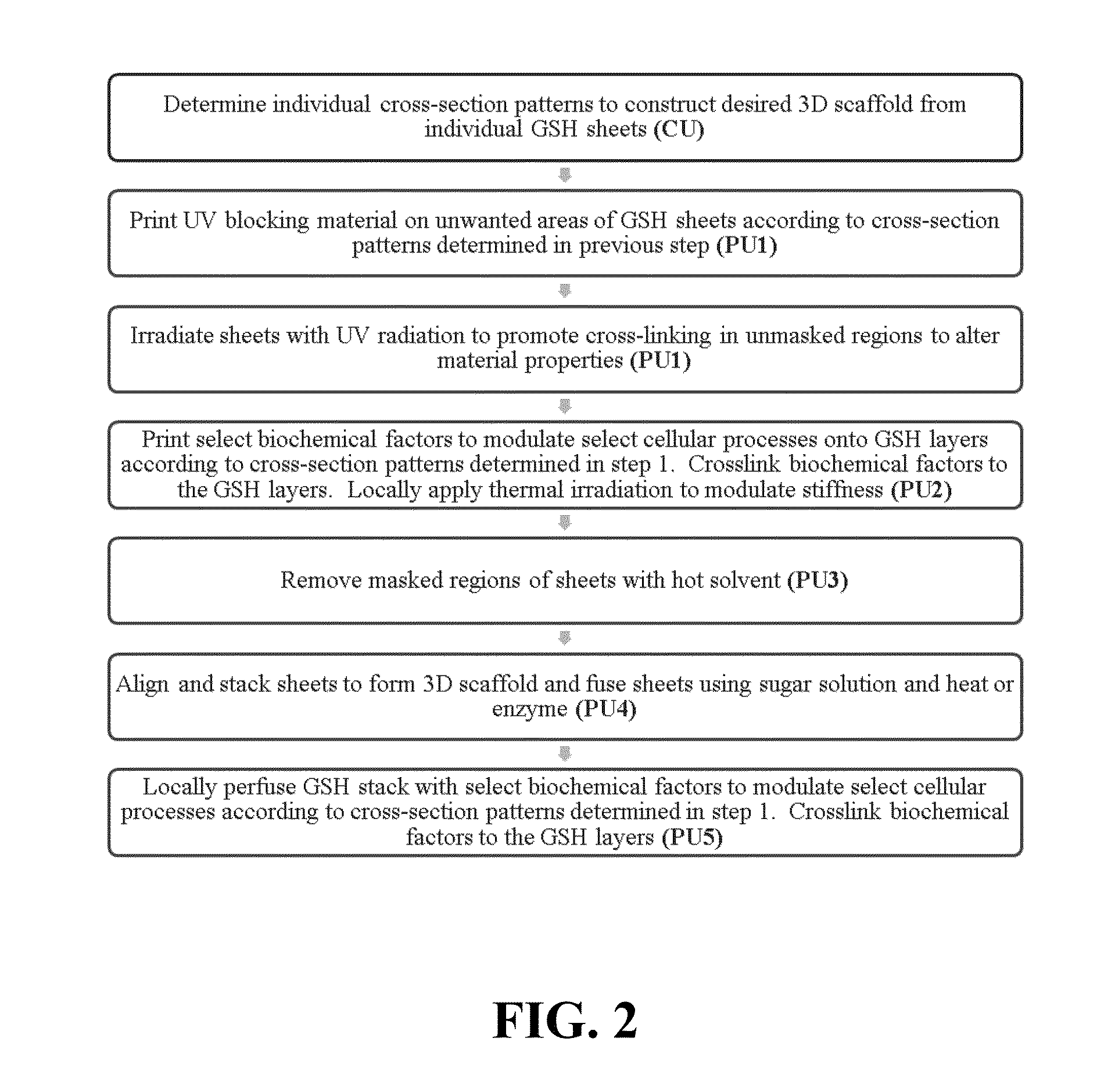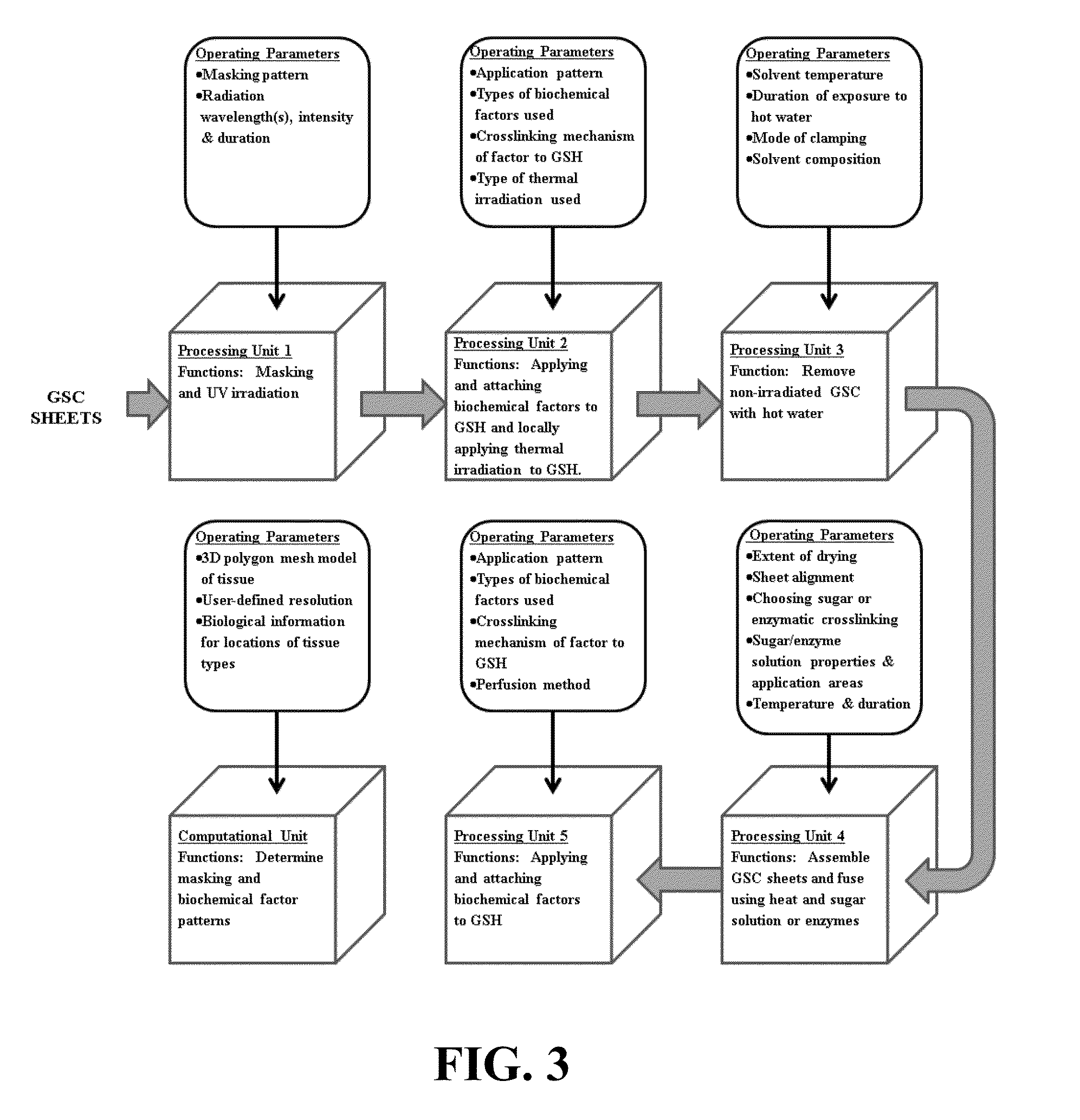Methods and apparatus for building complex 3D scaffolds and biomimetic scaffolds built therefrom
a 3d scaffold and scaffolding technology, applied in the field of biomaterials, can solve the problems of complex use of gelatin in ecm, lack of 3d structural integrity, toxic or immunogenicity of many cross-linking agents, etc., and achieve the effects of reducing the solubility of collagen in water, and reducing the number of cross-linking agents
- Summary
- Abstract
- Description
- Claims
- Application Information
AI Technical Summary
Benefits of technology
Problems solved by technology
Method used
Image
Examples
examples
[0121]The following non-limiting examples are provided to further illustrate embodiments of the invention disclosed herein. It should be appreciated by those of skill in the art that the techniques disclosed in the examples that follow represent approaches that have been found to function well in the practice of the invention, and thus can be considered to constitute examples of modes for its practice. However, those of skill in the art should, in light of the present disclosure, appreciate that many changes can be made in the specific embodiments that are disclosed and still obtain a like or similar result without departing from the spirit and scope of the invention.
Materials and Methods
[0122]Gelatin Film Preparation
[0123]Gelatin films were prepared using commercial gelatin powder type A (Fisher Scientific CAS#9000-70-8), glucose (dextrose anhydrous; Fisher Scientific, CAS #50-99-7), and distilled deionized water. The films were prepared gravimetrically with a Mettler AB-104S micro...
PUM
| Property | Measurement | Unit |
|---|---|---|
| physiological temperatures | aaaaa | aaaaa |
| diameter | aaaaa | aaaaa |
| temperature | aaaaa | aaaaa |
Abstract
Description
Claims
Application Information
 Login to View More
Login to View More - R&D
- Intellectual Property
- Life Sciences
- Materials
- Tech Scout
- Unparalleled Data Quality
- Higher Quality Content
- 60% Fewer Hallucinations
Browse by: Latest US Patents, China's latest patents, Technical Efficacy Thesaurus, Application Domain, Technology Topic, Popular Technical Reports.
© 2025 PatSnap. All rights reserved.Legal|Privacy policy|Modern Slavery Act Transparency Statement|Sitemap|About US| Contact US: help@patsnap.com



